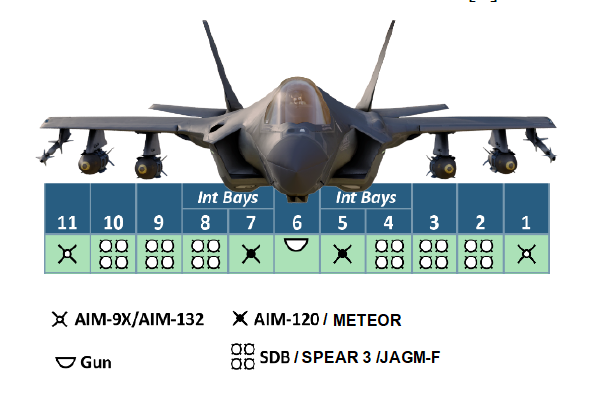StealthFlanker
New Member
- Joined
- Aug 12, 2016
- Messages
- 879
- Likes
- 1,213
I haven't read these others links but there are quite a few mistakes in this to say the least, for example:You might want to go through these.
https://defenceforumindia.com/forum...-shoot-down-the-deadly-brahmos-missile.68852/
Mach 3 target are not hard to detect and track, since the Doppler shift on their return are much easier to distingush from clutter return. Very slow targets are hard to track because their return mash up with clutter return.Mach 3 (2500-3000 km/hr) speed (which makes it very difficult to detect and track)
This is utter nonsense, anti ship missile which Russia possessed during the Cold War are stupidly fast, for example the Kh-22 can reach Mach 4.6 in the dive. Moskit can reach Mach 3, Kh-58 can reach Mach 3.6 ..etcindiandefencefan said:This is mainly due to the fact that NATO missile defense systems were prepared to handle Mach 1-1.5 speed Anti-Ship missiles which Russia possessed during the Cold War. But after the Mach 2-3 speed Onyx/BrahMos was developed, it surprised the western world and it is unknown what specific measures have been taken to handle this supersonic threat.
Us themselves also develop supersonic target drone such as the Mach 4 AQM-37 and GQM-163 to test their air defense capability against supersonic threat,they also purchase some MA-31 which is a version of KH-31. They intercepted these drones just fine.


Firstly, SM-2 range is 90 nm (166 km) not 90 kmindiandefencefan said:The US Navy uses the SM-2 as its standard long range SAM on its destroyers. It has a range of 90+ km and uses a semi-active homing radar seeker which means that the mechanically scanning illuminators on board the warships should provide them with guidance. This proves to be a handicap as a Burke carries 3 centrally mounted SPG-62 illuminators which will find it difficult to deal with a multi directional missile attack.

Secondly, SM-2 only need CW illumination from SPG-62 in the final phase of flight, so 3 illuminator doesn't mean the ship can only engage 3 missiles at the same time
Thirdly, both ESSM and SM-2 can operate under interrupted continuous wave illumination (ICWI) mode, what that means is that the illuminator can switch rapidly between different targets yet still able to guide missile to destroy targets

https://books.google.com.vn/books?id=nOSq20UXU38C&pg=PA29&lpg=PA29&dq="Interrupted+Continuous+Wave+Illumination+sm-2&source=bl&ots=w5HDYdbbKm&sig=ACfU3U1x9yEjqArDPcQC8pXRR7FEtSwjuQ&hl=en&sa=X&ved=2ahUKEwjCmKHKvZrnAhWG7WEKHRM7AbAQ6AEwBnoECAsQAQ#v=onepage&q&f=false
http://www.defense-aerospace.com/ar...-fires-evolved-seasparrow,-sm_2-(jan.-6).htmlESSM using interrupted continuous wave illumination and X-Band uplinks, and the first SM-2 Block IIIA firing using interrupted continuous wave illumination and X-Band uplinks.
Nope and nopeindiandefencefan said:at longer ranges if its following a high altitude profile, multiple SM-2 missiles are launched to counter the threat. 2-3 SAMs are fired against subsonic threats, so it is safe to assume that 4-5 SAMs will be fired at a single incoming BrahMos missile. Again, the SM-2 wasn’t designed to handle a missile flying at 3 times the speed of sound but designed to handle Soviet missiles flying at 1-1.5 times the speed of sound
several missiles are launched at one target to increase PK, but that doesn't mean they increase the number of missile launch to a ridiculous number to run themselves out of weapons.
And again, SM-2 are designed to handle supersonic threats, P-700, Moskit, Yakhont, Kh-22 , Kh-31, Kh-58 ..etc are all Mach 3- 4 missiles, and the drone targets that US used to test their air defense such as MA-31, AQM-37, GQM-163 can also reach Mach 3-4.
Utter nonsense and nonrealistic scenario.indiandefencefan said:Let us consider a scenario in which a Burke class destroyer escorting a carrier battle group (CBG) is faced with a swarm of 8 BrahMos/Yakhont Anti-Ship missiles. Once the missiles are detected by the AWACS at 150+ km from the ship, the usual procedure would be to direct fighter jets from a nearby carrier towards the missile to shoot it down.
Brahmos/Yakhont can't just magically appear out of thin air 150 km from the carrier, they need to be launched by some kind of platform, whether it is a destroyer or a fighter aircraft, they will be detected from a significantly greater distance by the AWACS and frankly, they will be attacked by the carrier air wing long before they have the chance to launch the 120 km range missiles.

This is not necessarily the case, your missiles might travel 3 times faster, but the stealth subsonic missile might be detected at only 1/3 the distance, then the interception times is quite similar.indiandefencefan said:But in this case, the missile is traveling at 3 times the speed of sound. Fighter jets will have 1/3 the time to react when compared to facing subsonic missiles. Hence the chances of a successful shoot down by fighters is less
Well, Arleigh Burke could use SM-2, ESSM and SM-6 to attack that destroyer since their missiles also have a surface to surface mode and they can fly faster than Brahmos.indiandefencefan said:But if we consider a solitary destroyer acting on its own, then the BrahMos will be detected at about 25-30 km from the ship. Considering a salvo of 8 BrahMos and that the missile travels at 1km/sec, the Burke has about 25-30 seconds to react
This doesn't make a lot of sense, Arleigh Burke has 2 VLS group location, one in the front, one in the back.indiandefencefan said:But there’s a big flaw in this if you haven’t noticed. Firing 24 ESSM takes 24 seconds, 4 ESSM target 1 BrahMos, so 24 of these can target 6 BrahMos and by that time the last few ESSM have been fired, there are still 2 BrahMos missiles left untargeted and speeding towards the Burke. So what’s the flaw? Think ……….If 16 BrahMos missiles (the capacity of new gen Russian frigates and Indian destroyers) were fired instead of 8, the defense of the Burke would be saturated if it’s operating alone.
So really not thing would stop it from launching 1 ESSM at the front and 1 ESSM at the back simultaneously.

and they can also ripple fire from the same front or back group

Last edited:



